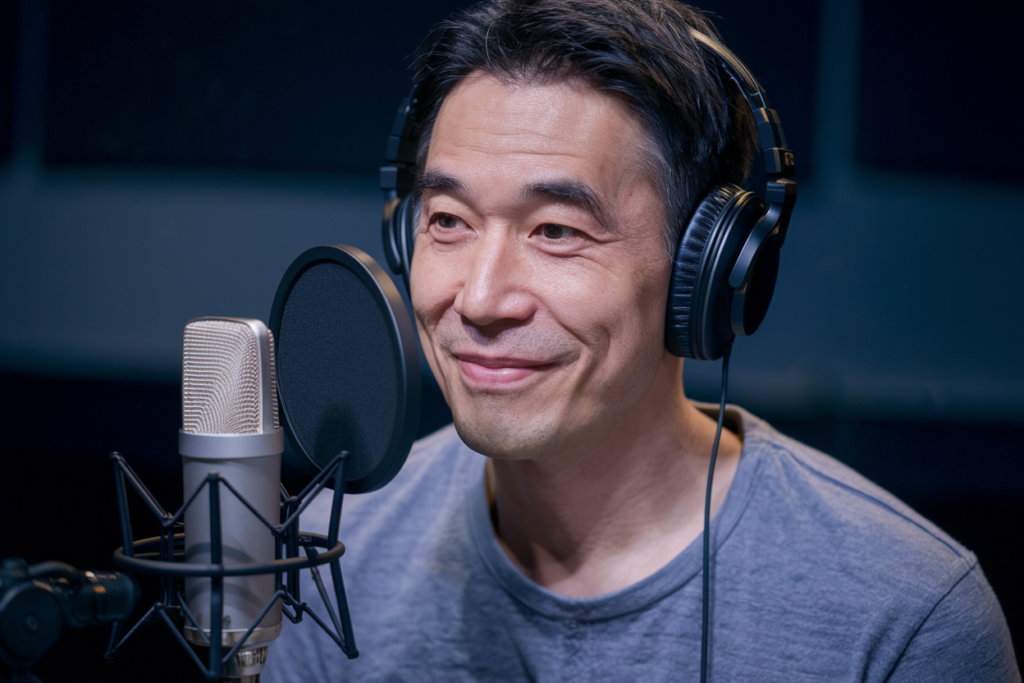Key Takeaways
- Historical Roots: The Japanese language has ancient origins dating back to the Jomon period and has evolved significantly over time through various historical influences.
- Script Systems: Japanese utilizes three main scripts—Kanji, Hiragana, and Katakana—each serving distinct functions in conveying meaning and phonetics, essential for understanding modern usage.
- Phonetic Evolution: Pronunciation and syntax have adapted over centuries, resulting in simplified speech patterns and a more structured sentence construction that reflects cultural shifts.
- Regional Dialects: Numerous dialects throughout Japan showcase linguistic diversity, with unique expressions that enhance communication and highlight local culture.
- Influence of Foreign Languages: Interactions with Western languages since the 19th century introduced many loanwords into Japanese, enriching its vocabulary while maintaining native expressions.
- Role of Media and Technology: Modern media influences everyday language usage, incorporating slang and new terms that reflect contemporary society and youth culture.
Have you ever wondered how the Japanese language evolved into what it is today? The evolution of the Japanese language is a fascinating journey that reflects Japan’s rich history and cultural shifts. From its ancient roots to modern-day usage, understanding this transformation can unlock insights into not just the language itself but also the people who speak it.
Overview of the Japanese Language
The Japanese language boasts a rich history, reflecting Japan’s cultural evolution and societal shifts. Originating from ancient roots, it encompasses multiple linguistic influences over centuries. You can trace its beginnings back to the Jomon period, where early forms of spoken communication emerged.
Japanese consists primarily of three scripts: Kanji, Hiragana, and Katakana. Kanji characters were adapted from Chinese writing during the 5th century AD and play a crucial role in conveying meaning. Hiragana serves as a phonetic script used for native words and grammatical functions, while Katakana is employed mainly for foreign words and onomatopoeia.
Understanding modern Japanese requires familiarity with these scripts alongside various dialects found throughout Japan. For instance, Kansai dialect offers unique expressions distinct from Tokyo’s standard version. Each regional variation adds depth to the language, showcasing local culture and identity.
As you explore Japanese further, you’ll discover how historical events shaped its vocabulary and pronunciation. For example, interactions with Western nations in the late 19th century introduced many loanwords into everyday usage—words that continue to enrich conversations today.
Grasping this complex yet beautiful language opens doors not only to effective communication but also to deeper cultural appreciation. Whether you’re interested in learning for personal growth or professional purposes like voiceover work or creative projects requiring voice acting talent, understanding its evolution enhances your connection to Japan’s vibrant heritage.
Historical Influences
The evolution of the Japanese language showcases a tapestry of historical influences that shaped its development. These influences reveal connections between Japan’s history and its linguistic transformations.
Ancient Origins
Ancient roots trace back to the Jomon period, where early forms of communication emerged among indigenous peoples. Archaeological findings suggest a rudimentary oral language existed, evolving over centuries into more complex structures. This progression laid the groundwork for future developments in syntax and vocabulary.
Chinese Influence
Chinese influence significantly impacted the Japanese language during the 5th century with the introduction of Kanji, characters borrowed from Chinese writing. These characters expanded Japanese vocabulary by providing new meanings and concepts. As a result, many words entered everyday usage, enriching literary expression and scholarly discourse. The adaptation process involved unique readings and pronunciations specific to the Japanese context.
Interaction with Other Languages
Interactions with various languages also shaped modern Japanese. Contact with Portuguese in the 16th century introduced foreign terms related to trade and technology. The Meiji Restoration (1868) marked another pivotal moment when Western languages influenced Japan’s modernization efforts, especially in science and industry. Borrowed words from English and other European languages became commonplace, reflecting Japan’s global engagement while retaining native expressions.
The interplay of these historical factors illustrates how dynamic forces have molded the Japanese language throughout time, creating a rich linguistic heritage that continues to evolve today.
Phonetic and Grammatical Changes
Phonetic and grammatical changes in the Japanese language reflect its dynamic evolution over centuries. These alterations showcase how pronunciation and structure adapted to cultural influences and societal shifts.
Shift in Pronunciation
Pronunciation in Japanese has undergone significant shifts, impacting both spoken communication and linguistic identity. Early forms of the language exhibited more straightforward phonetic sounds. Over time, vowel harmony became prominent, leading to a preference for open syllables. For instance, older pronunciations often included distinct consonant clusters that have now simplified into more fluid forms.
The introduction of foreign words brought additional phonetic variations. When incorporating terms from languages like English or Portuguese, native speakers adjusted their pronunciation patterns to fit existing Japanese phonetics. This adaptation not only enriched the vocabulary but also added complexity to speech sounds.
Evolution of Syntax
Syntax has evolved substantially within Japanese grammar. Originally characterized by a more flexible word order, modern Japanese typically follows a Subject-Object-Verb structure. This shift streamlined sentence construction while enhancing clarity in communication.
Grammatical particles play an essential role in conveying meaning within sentences. The use of particles such as “が” (ga), “を” (wo), and “に” (ni) helps specify subjects, objects, and locations effectively. As these elements have developed over time, they’ve contributed significantly to the precision with which ideas are expressed.
Moreover, pragmatic contexts influenced syntax changes as well. Casual conversation often favors simpler structures compared to formal writings found in literature or academic texts. Understanding these syntactic nuances allows for deeper engagement with various forms of Japanese media—be it films or voiceovers—enhancing your overall experience with the language’s rich tapestry.
By recognizing these phonetic and grammatical transformations, you can appreciate how deeply rooted historical events shape contemporary usage today.
Script Development
The development of scripts in the Japanese language showcases an intricate journey shaped by historical influences and cultural adaptations.
Kanji and Its Adoption
Kanji, introduced from Chinese writing around the 5th century, marks a significant evolution in Japanese script. These characters represent ideas rather than sounds, enriching vocabulary and literary expression. You’ll find that each Kanji carries unique readings based on context, allowing for diverse interpretations. For instance, the character “日” can mean both “day” and “sun,” depending on usage. This complexity not only enhances communication but also reflects Japan’s deep-rooted cultural values.
Hiragana and Katakana
Hiragana emerged as a phonetic script to complement Kanji, simplifying the writing system for native words and grammatical elements. It consists of 46 basic characters that symbolize distinct sounds, making it accessible for learners. Conversely, Katakana serves a different purpose—it represents foreign words or borrowed terms and also comprises 46 characters. For example, English terms like “coffee” become コーヒー in Katakana. Both scripts allow for fluidity in modern Japanese writing while preserving traditional roots.
Understanding these three scripts—Kanji, Hiragana, and Katakana—provides insight into Japan’s linguistic landscape. Each script plays a vital role in shaping how you express thoughts and emotions through written communication.
Modern Variations
Modern variations of the Japanese language reflect its adaptability and continuous evolution. These changes encompass dialects, regional differences, and the influence of media and technology, showcasing how contemporary society shapes linguistic expression.
Dialects and Regional Differences
Japanese consists of numerous dialects (known as hogen), each with unique characteristics. For instance, Kansai dialect differs significantly from Tokyo’s standard Japanese in pronunciation, vocabulary, and even grammar. In business or casual interactions, understanding these nuances can enhance communication effectiveness. Furthermore, regional expressions often carry cultural significance that deepens connections among speakers. Recognizing local dialects not only enriches your appreciation for the language but also highlights Japan’s diverse social fabric.
Impact of Media and Technology
Media and technology play crucial roles in shaping modern Japanese usage. The rise of digital communication has led to an influx of loanwords from English and other languages into everyday conversations. You might notice terms related to social media or technology seamlessly integrated into spoken Japanese. Additionally, television dramas and anime popularize specific phrases or slang that capture youth culture trends.
The voiceover industry also contributes to this modernization by introducing varied styles through animated characters or commercials. Voice artists adapt their performances to fit contemporary themes while navigating different accents or speech patterns reflective of regional influences. Such innovations illustrate how media not only entertains but actively participates in evolving language practices.
These modern variations underscore how dynamic the Japanese language remains amid societal changes—evolving yet deeply rooted in history as it adapts to new cultural contexts.
Conclusion
The evolution of the Japanese language is a fascinating reflection of Japan’s history and culture. As you explore its origins and transformations, you’ll uncover the intricate connections between language and identity. The interplay of ancient scripts and modern influences showcases how adaptable this language truly is.
Understanding Japanese not only enhances your communication skills but also deepens your appreciation for Japan’s rich cultural tapestry. Whether it’s through regional dialects or contemporary slang popularized by media, each aspect offers insights into the lives and values of the Japanese people. Embracing this dynamic linguistic journey opens doors to more meaningful interactions with Japan’s vibrant society.
Frequently Asked Questions
What is the origin of the Japanese language?
The Japanese language has its roots in the Jomon period, where early forms of communication emerged among indigenous peoples. Over centuries, it evolved significantly, influenced by historical events and cultural shifts.
How many scripts does the Japanese language use?
Japanese uses three scripts: Kanji, Hiragana, and Katakana. Kanji conveys meaning and is adapted from Chinese writing, while Hiragana represents native words and grammatical functions. Katakana is mainly used for foreign words.
What role did Kanji play in the development of Japanese?
Introduced around the 5th century, Kanji enriched Japanese vocabulary and literary expression. Its unique readings specific to context allowed for diverse interpretations within written communication.
How have regional dialects influenced modern Japanese?
Regional dialects like Kansai showcase local culture through distinct pronunciation, vocabulary, and grammar. Understanding these differences enhances effective communication and highlights Japan’s cultural diversity.
How has technology affected the Japanese language today?
Modern technology has introduced numerous loanwords from English into everyday usage, especially in social media and tech contexts. Popular media like anime also shape contemporary slang and phrases among youth culture.
What are some phonetic changes in modern Japanese?
Japanese pronunciation has evolved from straightforward sounds to more fluid forms due to vowel harmony and borrowing from foreign languages. This evolution reflects a dynamic linguistic landscape shaped by interaction with other cultures.
How have grammatical structures changed over time?
Historically flexible word order in Japanese has shifted towards a more consistent Subject-Object-Verb structure. Grammatical particles now play an essential role in conveying meaning across various contexts.
Why should we study the evolution of the Japanese language?
Studying its evolution provides insights into Japan’s rich history and cultural identity. Understanding these linguistic transformations helps appreciate how deeply rooted historical events influence contemporary usage today.







